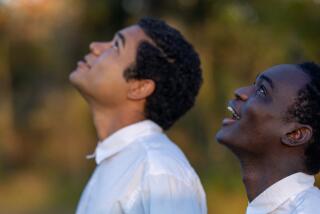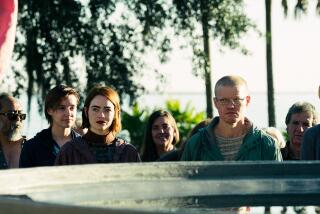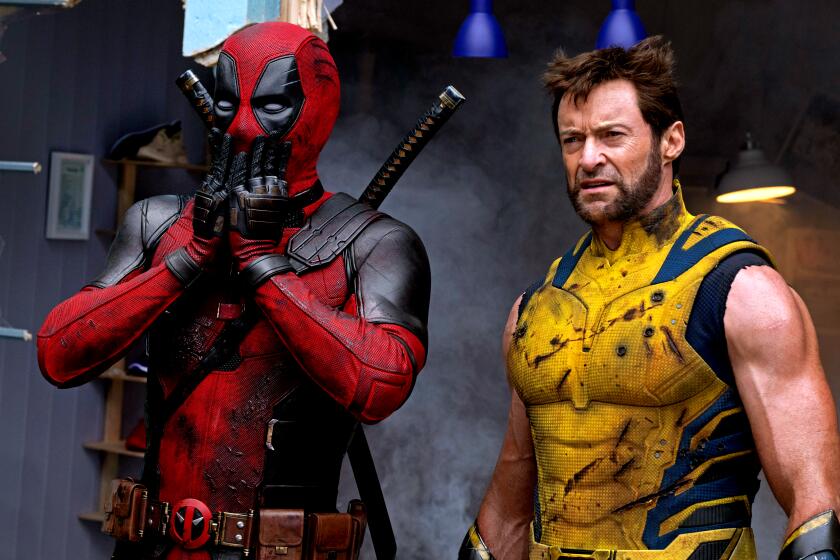Not all see the ‘Wonder’ of Terrence Malick, but his actors do
TORONTO — When it comes to Terrence Malick, history has a way of repeating itself.
When the reclusive filmmaker premiered his mystical period piece “The Tree of Life” at the Cannes Film Festival in 2011, the movie elicited a passionately divided reaction — some viewers rapturously applauded, others booed.
On Monday at the Toronto International Film Festival, Malick’s “To the Wonder” — a romantic drama starring Ben Affleck, former Bond girl Olga Kurylenko and Rachel McAdams — made its North American debut. The response? Restrained applause with quizzical comments in the halls after the screening. And that was after it played the Venice Film Festival, where some viewers booed.
PHOTOS: Toronto International Film Festival 2012
One of modern cinema’s most beguiling enigmas, Malick is also one of its most polarizing figures. As has been his policy for decades, the writer-director would not conduct an interview about nor even attend the festival screenings of “To the Wonder,” which arrived at Toronto in search of a U.S. distributor. (His wife Ecky took the stage at the first screening, saying that her husband “wish[ed] he could be here.”)
“To the Wonder” represents what is arguably Malick’s most experimental film yet, but McAdams expressed surprise at some of the audience reaction. After all, it shouldn’t come as a shock that Malick would craft a lyrical tone poem, given that his narratives have long been infused with evocative imagery and abstraction.
“It’s funny, all we say we want in life is freedom — of speech, of religion, of thought,” McAdams said. “And here’s Terry definitively not telling us what to think, and some people don’t like it.”
FULL COVERAGE: Toronto International Film Festival 2012
“To the Wonder” follows a stoic all-American man named Neil (Affleck) who falls in love with the beautiful Parisian single mother Marina (Kurylenko) while traveling in France. He then moves her to his Oklahoma small town, where they have a tempestuous romance. Neil also has yearnings for a hometown sweetheart (McAdams) with whom he has had an on-and-off-again relationship.
The story is believed to be inspired in part by the real life of Malick, who was married to a French woman for a number of years.
Javier Bardem costars as a priest seeking spiritual fulfillment in a church in the same Oklahoma town, exploring some of the spiritual questions Malick investigated in “The Tree of Life.”
PHOTOS: Toronto International Film Festival 2012
There is very little dialogue in “To the Wonder”; a confession of infidelity, for instance, contains only a voice-over utterance of “Forgive me” and an aggressive action in reply. Malick tells his story with images (particularly Kurylenko’s character prancing and twirling silently through fields) and music.
Shot by “Tree” cinematographer Emmanuel “Chivo” Lubezki, “Wonder” also utilizes vast Oklahoma spaces as set pieces — sun-dappled wheat fields, flat expanses of country homes, even parking lots of big-box retailers.
“Terry was pushing things past ‘Tree of Life’ in terms of being nontraditional,” Affleck told The Times. “I knew people who had that complaint with ‘Tree’ would really have it here.”
In separate interviews, the actors said that even the process of filming was unconventional. Malick would push actors to move around as needed, telling them to ignore their lines and simply move where the spirit took them.
“He seemed excited by everything we did,” Kurylenko said. “I’d be tired and he’d say ‘More, more, more. Jump more, dance more.’ It felt like I was in some kind of dynamic meditation, spinning and jumping.”
She said that the filmmaker shot quite a bit of scenes with dialogue, but most of those ended up on the cutting-room floor. They might have simply been intended as a way for the actors to feel out their characters, rather than sequences audiences were meant to see, Kurylenko said.
Malick, as he often does, had a tendency to point cameras away from the actors in the middle of a scene, which could be disconcerting. “I’d see the camera start out on me and then move up the branches and think ‘Maybe I should climb up the tree?’” Affleck recalled.
None of the actors had previously worked with Malick. They said they found the experience liberating on one level but also sometimes unsettling.
But they also said they understood why Malick, who more than most directors improvises on set, approached the shoot this way.
“I see it as using actors as paint. What I’m doing is blue, and Olga is magenta, and Rachel is yellow,” Affleck said of Malick’s approach. “In most movies you’re doing the painting while you’re shooting. But Terry is just collecting colors; he’ll do the painting in the editing room.”
Naysayers remain skeptical. In the streets and screening rooms of the festival this week, many have pointed out that there’s a difference between making an impressionistic film and an indulgent one.
Brushing the criticisms aside, McAdams praised Malick for his willingness to use film to explore larger questions about love, spirituality and fidelity.
“He asks us to exercise muscles we don’t exercise, in a time when movies have maybe gotten too easy,” she said. “We’re uncomfortable with the challenge. But it can be so rewarding.”
More to Read
Only good movies
Get the Indie Focus newsletter, Mark Olsen's weekly guide to the world of cinema.
You may occasionally receive promotional content from the Los Angeles Times.











